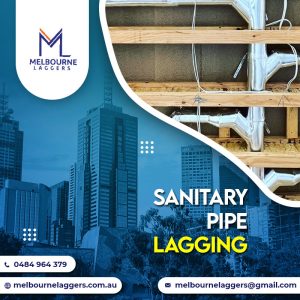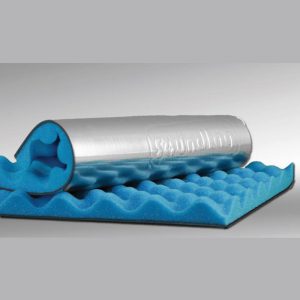Many residential and commercial buildings in Australia opt for Acoustic pipe lagging in their plumbing system to reduce the noise caused by turbulent flow in the Hydraulic Pipes. Despite the popularity of the segment, this seems to be a complex subject for most people. This is one of those services which people require and still face significant challenges to comprehend. The internet has resources and data about the subject in the form of articles and videos.
However, the authenticity is questionable unless and until it comes from a reliable source. Melbourne Laggers has extensive experience and expertise in the segment. They have had the opportunity to work with varied client expectations. This gives them a certain credibility level that distinguishes them from their peers and other sources. The company follows a consumer-oriented approach rather than a profit-based model. They value the clients’ needs and formulate solutions that would improve the effectiveness and shelf life of their solutions. They do not just provide lagging solutions, they design and deliver customised ideologies that distinguish their services.
Having said that, the company encourages the clients to make well-informed decisions. Their expert team has taken the time to explain the basics of Acoustic pipe lagging to their consumers. This topic would help the readers develop an intricate understanding of the subject and address their queries.
What is Acoustic Pipe Lagging?
Acoustic pipe lagging is the process of protecting the pipes in the building through durable and dependable sheathing materials. These elements have the strength and tractability to minimise noise, vibration and maintain the temperature. The type of material utilised in the process could vary based on the consumer’s needs and even the service providers. Melbourne Laggers utilise Soundlag, which is an internationally acknowledged material for lagging purposes.
What are the primary characteristics of Soundlag?
This material is composed of a foam based composite substance that is flexible and durable. The products have proved to be effective in both residential and commercial spaces. It has a wide range of applications, including wastewater pipes, hydraulic pipes, compressor and pump wraps, HVAC and fan housing. The product complies with the regulations levied by the Building Code of Australia (BCA) requirements. It has good sound-absorbing properties and also meets fire safety needs. The materials have performed significantly well with a performance of up to 5 dB (A). It has a dense, flexible layer that contributes to noise reduction. The decoupling layer balances the vibration between the surface and the barrier. Soundlag is available in different weight, thickness and colour variants.
What is the implementation process?
Our team conduct a thorough analysis of the pipes. They will comprehend various factors like flow volume, pressure and even the weak points. They would determine the type of material and installation process. Melbourne Laggers establish a time frame based on their client’s convenience. They will dissect the sheathing material into various sectors and cover the pipes with the ideal adhesive. The project team will also conduct a post-implementation
check to ensure the proper functioning of the system.
Why is it important?
Acoustic Pipe lagging is essential as it acts as the sound barrier and absorber. The sound of liquid gushing could be irritating to the inhabitants. This vibration would also damage the pipes. The lagging is a type of insulation process that would ensure the plumbing system’s durability while minimising the noise levels.
How is it more effective than other lagging techniques?
This system solely focuses on reducing the noise and enhances the stability of the pipes. It is easy to install and is extremely flexible. Consumers can call Melbourne Laggers to ask their queries and clarifications on the subject. The durability and effectiveness of the solution are considerably high when compared to the other conventional methods. It is environmentally friendly and does not contain any ozone-depleting substances. The technique is acknowledged and recommended by leading experts and specialists in the lagging industry.
These are some necessary information and questions that consumer’s raise. It is essential to understand that the significant lagging service providers develop their unique technique. They would formulate a plan based on their experience and consumer expectation. Some of these techniques are copyrighted and cannot be utilised by others. Pipe Lagging is more than just covering the pipes with sheathing material. It is about the identification of the right material that would minimise pressure and vibrations on the pipes. The material should not address extra weight and stress on the plumbing system. The lagging service provider would consider an array of intricate details before moving onto the implementation phase. Experts and specialists have conducted extensive research on the subject to understand the feasibility of Acoustic Pipe lagging. Melbourne Laggers also take adequate measures to warrant the solutions are in line with the regulations of the National Construction Code of Australia.




